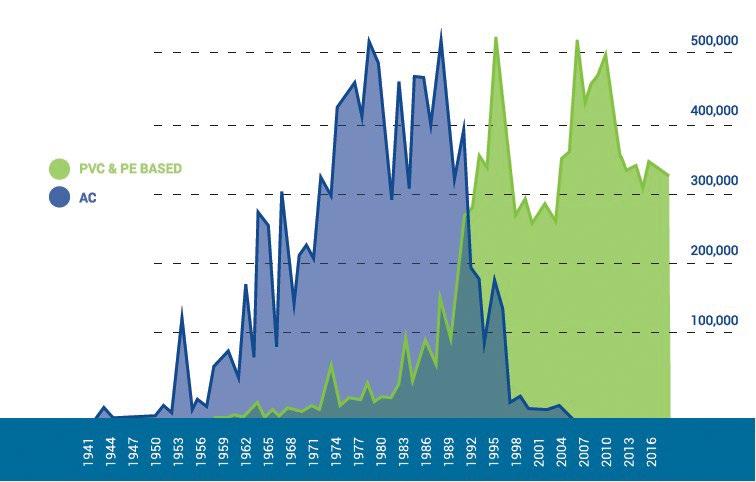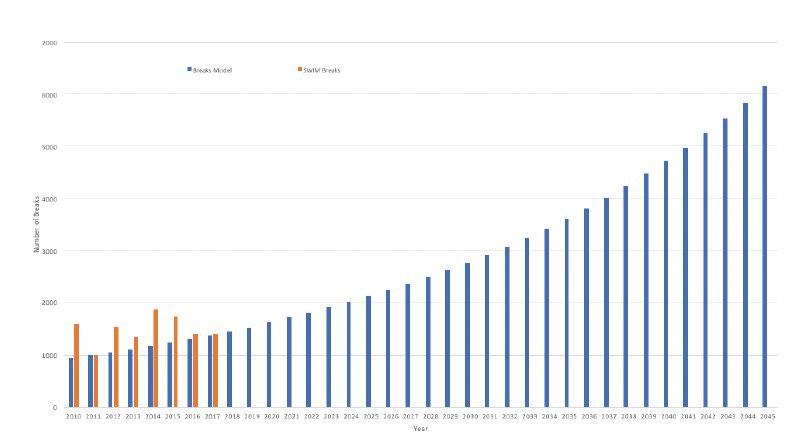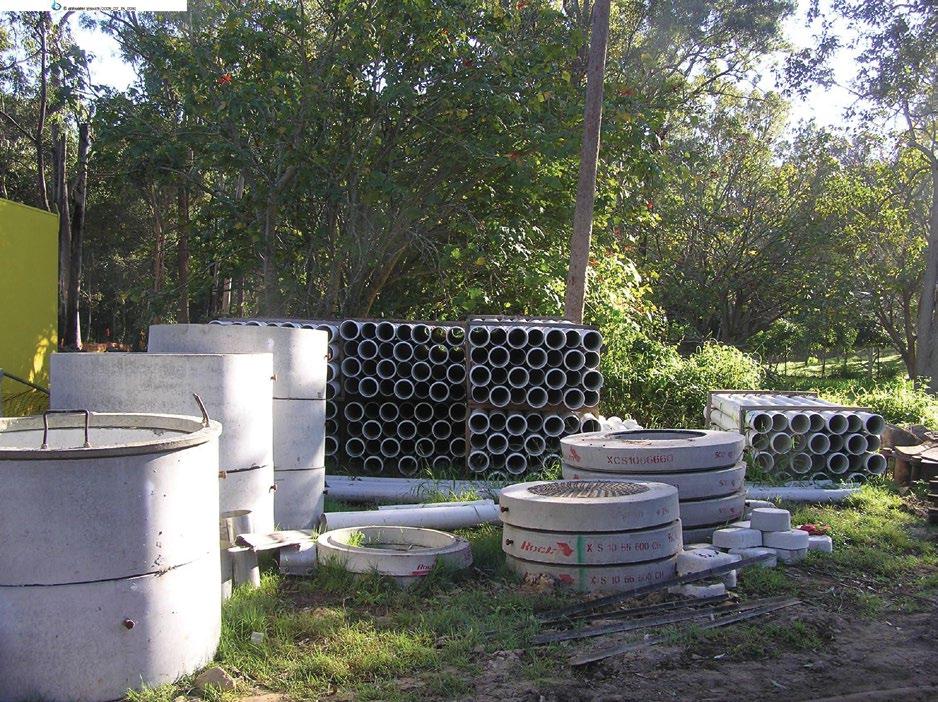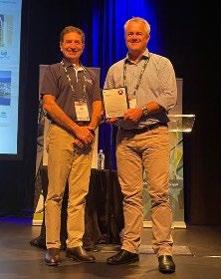
4 minute read
Water Assets Key to Water Quality
Desire Gralton
The Queensland water industry – and indeed water service providers across the country – are facing an infrastructure cliff that places communities’ health and safety at risk as ageing infrastructure deteriorates and needs to be replaced.
Local Government owns and operates over $40 Billion of water and wastewater assets, providing services to 4.3 million people across 370 communities.
The growth of the Queensland water industry accelerated after World War II and a large number the 42,000 km of water pipes and 35,500 km of wastewater pipes were installed by the 1970s. Installation has continued at a relatively steady pace since then.
Recent research, funded through the Queensland Water Regional Alliances Program (QWRAP), has shown that the average expected lifetime for many pipes is around 70 years, especially the asbestos pipes that were common in the early days of Queensland’s expansion. This means that nearly 3000 km of Queensland’s pipe network is currently beyond its expected life and this number will grow to 10,000 km by 2040.
Ageing pipes cause increasing breaks, blockages, bursts, sinkholes and disruptive and expensive “reactive repairs”. Without a concerted effort the research predicts that pipe breakages will rapidly increase over the next two decades, to be over four times higher than the present levels.
Replacement of existing pipes is costly, although costs can be reduced by carefully prioritising pipes that are most at risk and careful management (e.g. through proactive repairs, pressure management and pipe relining). Ageing cannot be avoided forever but an infrastructure cliff (estimated to exceed $3 billion by 2040) caused by leaving all replacement to the last minute, can be avoided through focused early action.
Investment key to the future
The Queensland Government is working with councils and other water service providers to avoid drinking water quality risks through increased investment
Figure 1: Over 22,000 km of asbestos cement (AC) water mains were installed between the 1960s and 90s leaving a cohort of pipes that will soon reach the end of their expected life.
Figure 2: Modelled total annual breaks (in blue) are slightly higher than reported annual breaks (in red) but are projected to increase rapidly from the 2020s (Source: Cosgrove and Fearon, 2017).





in water treatment assets, technology and staff capability.
One such example is Goondiwindi Regional Council, where funding from the State Government’s 2020-21 COVID Works for Queensland (W4Q) program was used to replace the town’s water mains.
The $190,000 project will improve the water quality and pressure to connected properties in Goondiwindi and the reliability and sustainability of Council’s water services more broadly.
According to Goondiwindi Mayor Cr Lawrence Springborg, Council had allocated more than half of the $860,000 it received from 2020-21 W4Q funding to renew and maintain existing infrastructure across the region.
“The W4Q funding complements the $500,000 that council spends each year to replace and upgrade the 186 kilometres of water mains across the Goondiwindi region to ensure our region’s infrastructure is up-to-date and sustainable for the future,” Cr Springborg said.
Collaborate approach to sewer relining
Another example is provided by the sewer relining programs being rolled out in several QWRAP regions. The collaborative approach to sewer relining allows savings on contracting and establishment costs, reduced unit rates and improved contract management, resulting in better outcomes.
In the WBBROC QWRAP region - which was the first to cooperate on relining in Queensland – significant benefits were realised in 2016 when collaborative relining allowed Cherbourg to rehabilitate existing pipes rather than continuing the previously recommended replacement program, saving $2.4M.
Repair, reline or replace?
New technology allows councils to understand better when to repair, reline or replace pipes, although figuring out the best way forward can be tricky.
Over the past two years, Townsville City Council have developed a comprehensive plan to monitor the performance of infrastructure assets across the city and plan to spend close to $1 billion dollars to replace and upgrade stormwater, water supply and sewerage infrastructure approaching the end of its operational life.
Deputy Mayor and Infrastructure Services Committee chairperson Mark Molachino said the upgrades demonstrated council’s commitment to proper asset management while also providing a stimulus for the local economy through local jobs, supply material and equipment.
Investing time and resources to assess the condition and criticality of assets are crucial. Still, they have to be balanced with the costs of capital works that are needed to achieve the lowest cost to ratepayers while maintaining the agreed levels of service.
qldwater will keep working with its members to ensure the industry remains agile and responsive to provide safe, secure and sustainable water services to all Queensland communities.








